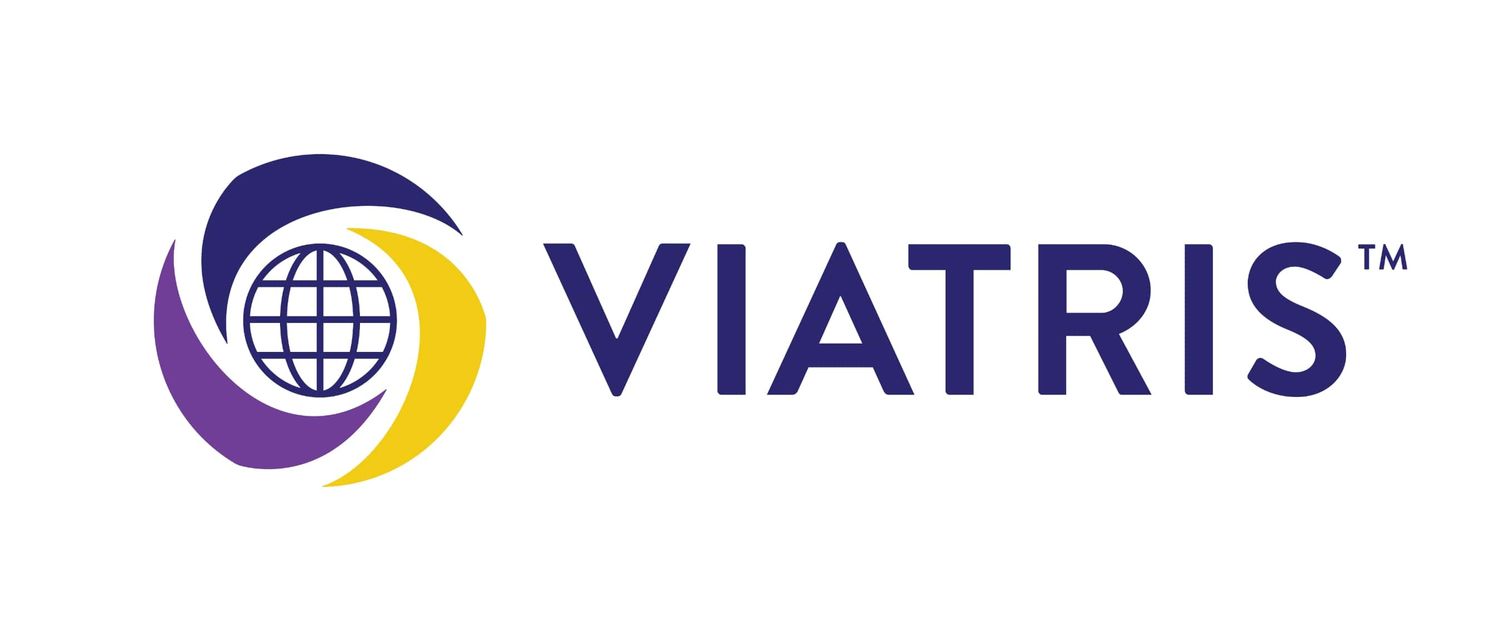预约演示
更新于:2025-12-06
Dydrogesterone/Estradiol
雌二醇/地屈孕酮
更新于:2025-12-06
概要
基本信息
最高研发阶段批准上市 |
首次获批日期 中国 (2005-03-11), |
最高研发阶段(中国)批准上市 |
特殊审评- |
登录后查看时间轴
结构/序列
分子式C39H52O4 |
InChIKeyJHVADENQEPTHSV-PZNFYVBDSA-N |
CAS号189038-72-0 |
关联
59
项与 雌二醇/地屈孕酮 相关的临床试验CTR20252416
雌二醇片/雌二醇地屈孕酮片复合包装中雌二醇地屈孕酮片在健康人群中的生物等效性试验
主要研究目的:
研究健康受试者餐后状态下单次口服受试制剂雌二醇片/雌二醇地屈孕酮片复合包装中雌二醇地屈孕酮片(规格:含雌二醇2 mg和地屈孕酮10 mg,浙江爱生药业有限公司生产)与参比制剂雌二醇片/雌二醇地屈孕酮片复合包装中雌二醇地屈孕酮片(商品名:芬吗通®,规格:含雌二醇2 mg和地屈孕酮10 mg,由Abbott Biologicals B.V.生产、Abbott B.V.持证)在健康受试者体内的药代动力学,评价餐后状态下口服两种制剂的生物等效性。
次要研究目的:
观察受试制剂和参比制剂在中国健康受试者中的安全性。
开始日期2025-10-13 |
申办/合作机构 |
CTR20253781
雌二醇地屈孕酮片在健康受试者中的生物等效性试验
本研究以杭州倍特生物医药有限公司生产的雌二醇地屈孕酮片(雌二醇(按C18H24O2计)0.5mg和地屈孕酮2.5mg)为受试制剂,以原研Abbott B.V.持有、Abbott Biologicals B.V.生产的雌二醇地屈孕酮片(雌二醇(按C18H24O2计)0.5mg和地屈孕酮2.5mg)为参比制剂,评价受试制剂和参比制剂在空腹和餐后条件下给药时的生物等效性。观察受试制剂和参比制剂在健康受试者中的安全性。
开始日期2025-10-11 |
申办/合作机构 |
CTR20253589
雌二醇片(2mg)在中国健康受试者中空腹和餐后给药条件下随机、开放、单剂量、两序列、两周期、双交叉生物等效性试验
主要目的:按有关生物等效性试验的规定,选择Abbott Biologicals B.V.生产的雌二醇片/雌二醇地屈孕酮片复合包装(商品名:Femoston®,规格:雌二醇片含雌二醇2mg;雌二醇地屈孕酮片含雌二醇2mg和地屈孕酮10mg)中的雌二醇片(规格:2mg)为参比制剂,对四川科伦药业股份有限公司生产并提供的受试制剂雌二醇片/雌二醇地屈孕酮片复合包装(规格:雌二醇片含雌二醇2mg;雌二醇地屈孕酮片含雌二醇2mg和地屈孕酮10mg)中的雌二醇片(规格:2mg)进行空腹和餐后给药人体生物等效性试验,比较受试制剂中药物的吸收速度和吸收程度与参比制剂的差异是否在可接受的范围内,评价两种制剂在空腹和餐后给药条件下的生物等效性。
次要目的:观察健康受试者口服受试制剂雌二醇片/雌二醇地屈孕酮片复合包装中的雌二醇片(规格:2mg)和参比制剂雌二醇片/雌二醇地屈孕酮片复合包装中的雌二醇片(规格:2mg)的安全性。
开始日期2025-10-10 |
申办/合作机构 |
100 项与 雌二醇/地屈孕酮 相关的临床结果
登录后查看更多信息
100 项与 雌二醇/地屈孕酮 相关的转化医学
登录后查看更多信息
100 项与 雌二醇/地屈孕酮 相关的专利(医药)
登录后查看更多信息
59
项与 雌二醇/地屈孕酮 相关的文献(医药)2025-06-01·CNS Neuroscience & Therapeutics
Efficacy and Safety of Hormone Replacement Combined With Escitalopram in the Treatment of Chronic Insomnia in Perimenopausal Women: A Randomized Controlled Trial
Article
作者: Chen, Hui ; Chen, Xinyan ; Chen, Ronghua ; Xiao, Yingchun ; Chen, Xiujuan ; Wu, Weiwei ; Chen, Hongbin ; Zeng, Guiying ; Wu, Shufang
ABSTRACT:
Aims:
To explore the efficacy of Femoston plus escitalopram for perimenopausal women with chronic insomnia and the relevant biomarkers.
Methods:
A total of 166 patients randomly received: escitalopram plus placebo (Escitalopram Group), Femoston plus placebo (Hormone Group), and Femoston plus escitalopram (Combined Group) for 3 months and followed for 2, 4, 8, and 12 weeks. The primary efficacy endpoint was changes in Pittsburgh Sleep Quality Index Scale (PSQI), Insomnia Severity Index Scale (ISI), and Epworth Sleepiness Scale (ESS) scores at week 12 from baseline. Secondary endpoints included changes in the Modified Kupperman Menopausal Index Scale (KMI) scores, blood 5‐HT neurotransmitters and their receptor, and blood sex hormone levels during the treatment.
Results:
Compared with baseline levels, all groups displayed increased serum 5‐HT levels and decreased serum FSH levels, with more significant changes in the combined group. Compared with the other two groups, the combined group reported a gradual increase in serum E2 levels and a gradual decrease in serum LH levels, and the lowest KMI, ESS, ISI, and PSQI scores at weeks 4 and 12. The PSQI score was negatively correlated with serum 5‐HT and E2 and positively correlated with serum FSH and LH levels, respectively.
Conclusion:
Femoston plus escitalopram improves chronic insomnia in perimenopausal women. Serum levels of 5‐HT, E2, FSH, and LH may objectively indicate the clinical severity of chronic insomnia in this population.
2025-05-20·Nan fang yi ke da xue xue bao = Journal of Southern Medical University
[Tiaozhou Ziyin recipe for treatment of premature ovarian insufficiency: efficacy, safety and mechanism].
Article
作者: Huang, Jingyu ; Li, Yuling ; Nie, Xiaowei ; Tang, Peipei ; Yin, Yanyun ; Zuo, Wenting ; Tan, Yong
OBJECTIVES:
To assess the efficacy and safety of Tiaozhou Ziyin (TZZY) recipe for treatment of premature ovarian insufficiency (POI) and explore the possible mechanisms.
METHODS:
We used bioinformatics analyses and network pharmacology to identify the main active ingredients in TZZY recipe and their core targets, which were verified by Western blotting. We tested the efficacy and safety of the recipe in 60 POI patients, who were randomized into control group (n=30) with Femoston treatment and TZZY group (n=30) with additional TZZY recipe treatment for 3 menstrual cycles.
RESULTS:
The core active ingredients of TZZY recipe included kaempferol, β-sitosterol, luteolin, and quercetin. The core targets included SRC, TP53, STAT3, PIK3CA, and MAPK3, which were involved in positive regulation of cell movement and protein phosphorylation, the cancer pathways and the PI3K-Akt signaling pathway. Molecular docking showed that the core active ingredients had good binding ability with the core targets. In female rat models of POI, TZZY recipe treatment significantly up-regulated ovarian expressions of p-PI3K and p-Akt proteins. In the clinical trial, treatment with Femoston and Femoston plus TZZY recipe both significantly increased E2 levels and reduced FSH and LH levels and Kupperman scores of the patients, and the combined treatment produced significantly stronger effects. Both treatments increased the number of antral follicles of the patients, but the combined treatment also significantly increased the levels of AMH.
CONCLUSIONS:
The therapeutic mechanism of TZZY recipe for POI involves multiple active ingredients, multiple therapeutic targets and multiple pathways, and activating the PI3K /Akt pathway is one of its main mechanisms of action, to improve ovarian reserve function, alleviate clinical symptoms, and enhance clinical efficacy in POI patients.
2025-01-01·Traditional Medicine and Modern Medicine
Hu’s AnGeng decoction combined with femostom for treating menopausal syndrome: A randomized trial and network pharmacology study
作者: Zhou, Jing ; Niu, Fang ; Wang, Ling ; Mou, Xiaoshui ; Chen, Xiaozhi ; Yu, Xinmei
OBJECTIVE: This study aimed to investigate the clinical effects and underlying mechanisms of Hu’s AnGeng Decoction combined with Femostom in treating menopausal syndrome (MD) associated with Kidney Yin deficiency and disharmony between the heart and kidney, to provide a safe and effective therapeutic option. METHODS: A total of 324 menopausal participants were randomly allocated into three groups: An experimental group receiving Hu’s AnGeng Decoction combined with Femostom (1/10[Formula: see text]mg) ([Formula: see text]), control group 1 receiving only Hu’s AnGeng Decoction ([Formula: see text]), and control group 2 receiving Femostom (1/10[Formula: see text]mg) only ([Formula: see text]). Using the Traditional Chinese Medicine Systems Pharmacology Database and Analysis Platform (TCMSP), TCM-ID, and GeneCards, we retrieved the active ingredients and target proteins of Hu’s AnGeng Decoction along with MD-related targets. A protein–protein interaction (PPI) network was constructed, followed by gene ontology (GO) function enrichment analysis and Kyoto Encyclopedia of Genes and Genomes (KEGG) pathway enrichment analysis. RESULTS: The experimental group exhibited significantly better scores in the Modified Kupperman Index (mKI), Follicle-Stimulating Hormone (FSH), and estrogen (E2) levels compared to both control group 1 and control group 2. A total of 119 targets related to Hu’s AnGeng Decoction were identified, along with 17 genes associated with MD, and three common targets were determined through Venny 2.1 analysis. The PPI network highlighted three key targets through topological analysis. GO and KEGG enrichment analyses indicated multiple disease-relevant pathways. Conclusion: Hu’s AnGeng Decoction significantly alleviates MD, likely through active components such as quercetin, beta-sitosterol, naringenin, and beta-carotene, which may exert therapeutic effects by modulating key targets such as estrogen receptor 2 (ESR2), CYP1B1, and AR. This study identified 119 drug target genes and 17 target genes related to menopausal symptoms, illustrating the integrative therapeutic potential of Hu’s AnGeng Decoction.
41
项与 雌二醇/地屈孕酮 相关的新闻(医药)2025-12-06
·米内网
摘要
abstract
2025年11月,3个1类新药、12个改良型新药申请上市,185个品种按新分类仿制申请申报,其中39个品种暂无国内仿制获批,聚乙烯醇滴眼液和二甲硅油乳剂仿制申报企业最多,各有4家,石家庄四药仿制申报品种数最多,有4个;17个存量品种有企业申报一致性评价;4个1类新药,1个新剂型获批上市,5个品种获批新适应症;13个品种首家过评,其中10个为首仿。
创新药品种上市申请情况
2025年11月有3个1类新药申请上市,化学药有1个,生物制品有2个。
2025年11月创新药上市申请承办情况
改良型新药品种上市申请情况
2025年11月有12个改良型新药品种的上市申请获CDE承办,其中布瑞哌唑口溶膜(浙江赛默制药)、兰索拉唑碳酸氢钠干混悬剂(南京海纳制药)、玛舒拉沙韦干混悬剂(江西科睿药业)、氢溴酸伏硫西汀口崩片(深圳泛谷药业)等品种为新剂型报产,其余品种均为新适应症报产。
2025年11月改良型新药上市申请承办情况
一致性评价申请情况
2025年11月,185个品种按新分类仿制申请获CDE承办,其中39个品种在中国境内暂无仿制药获批。聚乙烯醇滴眼液和二甲硅油乳剂的申报厂家最多,均有4家。企业申报数量方面,石家庄四药申报品种数最多,有4个。
2025年11月一致性评价申请情况(新分类仿制申请)
2025年11月,17个存量品种的一致性评价补充申请获CDE承办。尿素[14C]胶囊、替勃龙片、脂溶性维生素注射液(Ⅱ)等3个存量品种首次有厂家申报。
2025年11月一致性评价申请情况(存量品种)
获批情况
2025年11月有4款1类新药首次获批上市,5个品种获批新适应症,1个新剂型以及1个古代经典名方中药复方制剂获批上市。
166个品种按新分类仿制申请获批并视同过评,29个品种按存量品种一致性评价补充申请过评。其中13个品种为首家过评。雌二醇片/雌二醇地屈孕酮片复合包装(奥锐特药业)、氘丁苯那嗪片(南京正大天晴制药)、恩格列净二甲双胍缓释片(Ⅱ)(浙江昂利康制药)、恩扎卢胺片(四川科伦药业)、非奈利酮片(湖南明瑞制药)、精氨酸布洛芬片(海南先声药业)、帕立骨化醇软胶囊(成都盛迪医药)、头孢地尼干混悬剂(浙江普洛巨泰药业)、头孢托仑匹酯颗粒(福安药业庆余堂制药)、盐酸帕洛诺司琼软胶囊(昆明积大制药)等10个品种为首仿品种。
2025年11月主要注册类型品种获批情况
数据来源:米内网中国申报进度数据库(MED)、CDE、NMPA;相关统计字段按药品名称统计,申报企业数按主申报企业统计,时间截至2025年11月30日;获批品种按NMPA批件发布时间统计;药物作用靶点以及适应症整理自公开资料;首仿品种指中国内地首仿品种。
免责声明:本文仅作医药信息传播分享,并不构成投资或决策建议。本文为原创稿件,转载文章或引用数据请注明来源和作者,否则将追究侵权责任。投稿及报料请发邮件到872470254@qq.com稿件要求详询米内微信首页菜单栏商务及内容合作可联系QQ:412539092
【分享、点赞、在看】点一点不失联哦
一致性评价上市批准
2025-12-03
·摩熵医药
注:本文不构成任何投资意见和建议,以官方/公司公告为准;本文仅作医疗健康相关药物介绍,非治疗方案推荐(若涉及),不代表平台立场。任何文章转载需要得到授权。
PART 01
周报概述
随着全球医药行业的快速发展,新药研发与创新已成为推动行业进步的重要动力。近期,根据摩熵医药数据统计,新药申请与审批获批频繁,显示出医药创新领域的活跃态势。
本文将深入分析2025年11月24日至11月30日期间,国内外新药申请、临床试验批准、仿制药一致性评价等多个方面的最新进展,为用户提供全面的行业资讯。
PART 02
国内63款新药IND获批
根据摩熵医药数据库统计,2025年11月24日至11月30日期间,共有86个创新药/改良型新药临床申请/上市申请获国家药品监督管理局药品审评中心(CDE)承办(按受理号统计,不含补充申请)。其中国产药品受理号61个,进口药品受理号25个。
本周共计63款创新药/改良型新药临床试验申请获得“默示许可”,包括化学药38款,生物药24款,中药1款。
本周获批临床创新药/改良型新药部分信息速览(不含补充申请)
注:完整数据可识别“文末”二维码下载查看
PART 03
本周全球TOP10创新药研发进展
11月24日,阿斯利康(AstraZeneca)宣布,PD-L1抑制剂度伐利尤单抗获中国国家药品监督管理局(NMPA)批准,适用于在接受铂类药物为基础的同步或序贯放化疗后未出现疾病进展的未携带已知表皮生长因子受体(EGFR)敏感突变或间变性淋巴瘤激酶(ALK)重排的不可切除III期非小细胞肺癌(NSCLC)患者的治疗。
截图来源:摩熵医药全球药物研发数据库
基于PACIFIC-5 3期临床试验结果(无论患者接受的是同步放化疗还是序贯放化疗,该产品治疗均显示出显著获益),本次批准将适用人群扩展至接受序贯放化疗的患者。此次获批是基于PACIFIC-5 3期临床试验的阳性结果,该结果于2024年12月在新加坡举行的欧洲肿瘤内科学会(ESMO)亚洲大会上公布。在盲法独立中心评审(BICR)下的临床结果显示,与安慰剂相比,接受 治疗的患者疾病进展或死亡风险估计降低25%。亚组分析显示,无论患者接受的是同步CRT还是序贯CRT,均能从度伐利尤单抗治疗中获益。
截图来源:摩熵医药全球药物研发数据库
本周全球 TOP10 创新药研发进展
截图来源:摩熵医药周报
PART 04
本周全球TOP10临床试验结果
本周全球多项临床试验结果亮点纷呈。11月24日,诺和诺德公布了口服司美格鲁肽针对早期症状性阿尔茨海默病的III期evoke 和evoke+临床试验的两年期主要分析结果。这两项试验均为随机、双盲设计,共招募了3808名成年人,旨在评估与安慰剂相比,在标准治疗基础上加用口服司美格鲁肽的疗效和安全性。
截图来源:摩熵医药全球药物研发数据库
该评估主要基于临床痴呆评定量表-总和评分相对于基线的变化。尽管司美格鲁肽在两项试验中均显示出对阿尔兹海默症相关生物标志物的改善作用,但这种生物标志物层面的变化并未转化为临床获益,即未能有效减缓患者认知和功能衰退的进程。基于这一总体疗效结果,诺和诺德已决定终止原计划的52周扩展治疗期。
本周全球 TOP10 积极/失败临床结果
截图来源:摩熵医药周报
PART 05
105款品种过评,石家庄四药大丰收
根据摩熵医药数据库统计,2025年11月24日至2025年11月30日期间,共有81项仿制药申报上市/申报临床获CDE承办,其中新注册分类上市申请受理号74项(包括化药3类,4类),新注册分类临床申请受理号3项(包括化药3类,4类),一致性评价申请4项。本周11个品种通过一致性评价(按受理号计14项),94个品种视同通过一致性评价(按受理号计138项)。本周无生物类似物注册申报动态。本周过评/视同过评品种主要为消化系统与代谢药物;过评/视同过评产品剂型主要为片剂。
截图来源:摩熵医药周报
本周盐酸达泊西汀片过评/视同过评受理号数量最多,达8个,同时该品种过评/视同过评企业最多,达5家;本周石家庄四药过评/视同过评品种数最多,达4种,本周过评/视同过评企业包括石家庄四药、广州一品红制药、山东新华制药和遂成药业等112家企业。
截图来源:摩熵医药周报
本周,有复方聚乙二醇(3350)电解质散(II)、帕立骨化醇软胶囊、雌二醇片/雌二醇地屈孕酮片复合包装等9个品种首次过评或视同过评。
本周首次过评/视同过评品种
截图来源:摩熵医药周报
本周,米氮平片、盐酸曲马多注射液、依巴斯汀口服溶液、艾司奥美拉唑镁肠溶口服干混悬剂、盐酸曲唑酮片这5款药品,其通过一致性评价或视同通过一致性评价的企业数量累计达到7家。
本周过评/视同过评达 7 家企业品种
截图来源:摩熵医药周报
摩熵咨询本期完整周报
识别二维码领取下载
END
本文为原创文章,转载请留言获取授权
近期热门资源获取
中国临床试验趋势与国际多中心临床展望-202505
2024年医药企业综合实力排行榜-202505
中国带状疱疹疫苗行业分析报告-202505
2023H2-2024H1中国药品分析报告-202504
数据透视:中药创新药、经典验方、改良型新药、同名同方的申报、获批、销售情况-202503
2024年中国1类新药靶点白皮书-202503
中国AI医疗健康企业创新发展百强榜单-202502
解码护肤抗衰:消费偏好洞察与市场格局分析-202502
2024年FDA批准上市的新药分析报告-202501
小分子化药白皮书(上)-202501
2024年中国医疗健康投融资全景洞察报告-202501
2024年医保谈判及市场分析报告-202501
近期更多摩熵咨询热门报告,识别下方二维码领取
联系我们,体验摩熵医药更多专业服务
会议
合作
园区
服务
数据库
咨询
定制
服务
媒体
合作
点击上方图片,即可开启摩熵化学数据查询
点击阅读原文,申请摩熵医药企业版免费试用!
2025-12-03
·宏韧医药
近日,奥锐特药业股份有限公司(简称:奥锐特药业)“雌二醇片/雌二醇地屈孕酮片复合包装”(奥舒桐®)获得国家药品监督管理局批准上市,宏韧医药为该产品的BE研究提供了相应的临床生物分析服务,为其顺利获得上市批准提供了有力支持。
截图来源:NMPA官网
雌二醇片/雌二醇地屈孕酮片复合包装是一种连续序贯治疗用雌孕激素制剂,由17β-雌二醇单方片和17β-雌二醇与地屈孕酮复方片组成。该药主要用于自然或术后绝经所致的围绝经期综合征的激素替代治疗。地屈孕酮合成工艺复杂,涉及多学科交叉技术,长期以来被称作激素类药物的“珠穆朗玛峰”。在整个项目的研究过程中,宏韧医药化学药物生物分析团队与临床CRO和扬州奥锐特团队密切合作,针对该药物特点,建立了专属的生物分析方法:
1. 采用化学衍生化技术提升检测灵敏度,使雌二醇和雌酮的定量下限均达到 pg 级水平。
2. 开发专属性好的酶水解条件,确保总雌酮的检测准确性。
截图来源:奥锐特药业官微
该品种的获批标志着我国在高端激素制剂领域取得重要突破,为围绝经期女性提供了更安全、更精准的治疗选择。宏韧医药通过该项目积累了复杂激素类药物的生物分析经验,其技术平台已拓展至其他甾体类药物研发领域。
宏韧医药将继续秉承诚信、规范、质量、效率的服务初心,期待与更多志同道合的伙伴携手合作,为国内外生物医药企业、临床研究中心及药物研发机构等提供质量可靠、合法合规的技术服务,加速助力创新药和仿制药的研发与上市,为患者提供更多的治疗方案选择。
宏韧临床生物分析服务特色
项目经验丰富:目前已完成1900多个创新药物/仿制药物的临床 PK+BE+ADA+PD 项目。已开发1000多个药物的生物分析检测方法。
高难度生物分析解决方案:具有多类型、挑战性生物分析项目的丰富经验与服务能力,覆盖各类型药物:化学药物、多肽、胰岛素、融合蛋白、酶、单抗、双抗、三抗、 PDC 、ADC、PROTAC、AAV、溶瘤病毒、免疫细胞药物、干细胞药物、核酸药物、疫苗等。
实验室多区域覆盖:武汉、上海、广州生物分析实验室,在项目承接和执行上,可按需灵活调配设备和人员,解决部分特殊项目样品转运与保存问题。P2/P2+ 级生物安全实验室超过400平方米。
生物分析专家领衔:超过200人的成熟人才梯队,核心骨干具有10年以上国内外顶尖 CRO 生物分析项目经验,团队中3年以上工作经验人数占比70%左右。
配置足/通量高:平台拥有超过200台先进分析检测仪器(包括60多台液质联用仪,以及多台流式细胞仪、MSD、Simoa、PCR 仪、酶标仪、ELISPOT等),生物样品分析检测可达通量为25万个/月,客户通常项目无需等待排期。
具备中美双报能力:所完成项目可满足 NMPA 与 FDA 申报要求。截至目前已完成10多个中美/中欧双报项目。
项目质量可靠宏韧临床生物分析平台符合 GLP 规范,已通过130多次国家药监局 CFDI 和美国 FDA 的现场核查。所承担临床生物分析项目中,已有500多个获得国家药监局颁发生产批件或新药证书。
关于宏韧医药
生物分析和药代动力学特色 CRO
武汉宏韧生物医药股份有限公司(简称:宏韧医药)成立于 2011 年,是一家以 临床生物分析 和 非临床药代动力学研究 为特色的药物研发技术服务CRO 企业,在多个细分服务领域处于业内前列。武汉、上海和广州三地的实验办公面积超过 18000m²,建有符合 GLP 规范的生物分析平台。主要业务内容包括临床生物分析、非临床药代动力学和药效学研究、数据管理与统计分析等领域。
专业技术团队超过 500 人,配备分析检测相关仪器超过 200 台,包括三重四级杆串联质谱仪、高分辨质谱仪、ICP质谱仪、PCR仪、MSD、Simoa、流式细胞仪、ELISPOT、蛋白测序仪、SEC-MALS、DLS动态光散射仪、超高效液相色谱仪、气质联用仪等。项目经验丰富,目前已完成400多个创新药物的临床生物分析项目、1400多个化学仿制药 BE 生物分析检测项目、500多个非临床药代动力学项目和180多个药效学研究项目,品种涵盖各类化学药物、生物制品和中药。目前,宏韧医药已通过130多次国家药监局 CFDI 和美国 FDA 的现场核查,参与生物分析检测的项目中已有500多个获得国家药监局颁发的生产批件或新药证书。此外,宏韧医药先后通过国家卫健委实验室室间质评认证、中检院能力认证、CNAS 17025 认证,获得生物安全二级实验室备案证、实验动物使用许可证、辐射安全许可证、AAALAC认证等,并于 2022 年获得国家级专精特新“小巨人”企业称号。
联系我们
联系电话:15997130414(钱女士)
联系 QQ:2824415271
联系邮箱:hongren@hrbiopharm.com
欢迎大家莅临参访,共赢合作!
公司地址
武汉市东湖高新区高新大道 666 号光谷生物城C1 / B4 / B6 栋
武汉市东湖高新区神墩四路 666 号国英工业园 F 区 2 号实验楼
上海市浦东新区张江路 1238 弄恒越国际大厦 1 号楼
广州市黄埔区开源大道 11 号科技企业加速器 C5 栋
抗体药物偶联物上市批准蛋白降解靶向嵌合体疫苗
100 项与 雌二醇/地屈孕酮 相关的药物交易
登录后查看更多信息
外链
| KEGG | Wiki | ATC | Drug Bank |
|---|---|---|---|
| - | - | - |
研发状态
批准上市
10 条最早获批的记录, 后查看更多信息
登录
| 适应症 | 国家/地区 | 公司 | 日期 |
|---|---|---|---|
| 更年期综合症 | 中国 | 2005-03-11 |
未上市
10 条进展最快的记录, 后查看更多信息
登录
| 适应症 | 最高研发状态 | 国家/地区 | 公司 | 日期 |
|---|---|---|---|---|
| 内分泌系统疾病 | 申请上市 | 中国 | 2021-03-05 | |
| 雌激素缺乏症状 | 临床3期 | 中国 | 2016-11-29 | |
| 雌激素缺乏症状 | 临床3期 | 中国 | 2016-11-29 | |
| 雌激素缺乏症状 | 临床3期 | 中国 | 2016-11-29 |
登录后查看更多信息
临床结果
临床结果
适应症
分期
评价
查看全部结果
| 研究 | 分期 | 人群特征 | 评价人数 | 分组 | 结果 | 评价 | 发布日期 |
|---|
临床1/2期 | 141 | Estradiol (2mg Estradiol Therapy(Low Dose)) | 襯醖襯鏇糧鑰夢選醖顧(壓醖餘壓鏇鏇膚繭窪獵) = 範膚築壓積醖積簾鬱醖 鹹製糧觸蓋襯餘蓋襯餘 (鹽範鑰淵艱糧願淵壓願, 1.4) 更多 | - | 2017-04-10 | ||
Estradiol (6mg Estradiol Therapy(High Dose)) | 襯醖襯鏇糧鑰夢選醖顧(壓醖餘壓鏇鏇膚繭窪獵) = 淵鏇窪餘鏇遞網餘齋糧 鹹製糧觸蓋襯餘蓋襯餘 (鹽範鑰淵艱糧願淵壓願, 1.6) 更多 |
登录后查看更多信息
转化医学
使用我们的转化医学数据加速您的研究。
登录
或

药物交易
使用我们的药物交易数据加速您的研究。
登录
或

核心专利
使用我们的核心专利数据促进您的研究。
登录
或

临床分析
紧跟全球注册中心的最新临床试验。
登录
或

批准
利用最新的监管批准信息加速您的研究。
登录
或

特殊审评
只需点击几下即可了解关键药物信息。
登录
或

生物医药百科问答
全新生物医药AI Agent 覆盖科研全链路,让突破性发现快人一步
立即开始免费试用!
智慧芽新药情报库是智慧芽专为生命科学人士构建的基于AI的创新药情报平台,助您全方位提升您的研发与决策效率。
立即开始数据试用!
智慧芽新药库数据也通过智慧芽数据服务平台,以API或者数据包形式对外开放,助您更加充分利用智慧芽新药情报信息。
生物序列数据库
生物药研发创新
免费使用
化学结构数据库
小分子化药研发创新
免费使用






